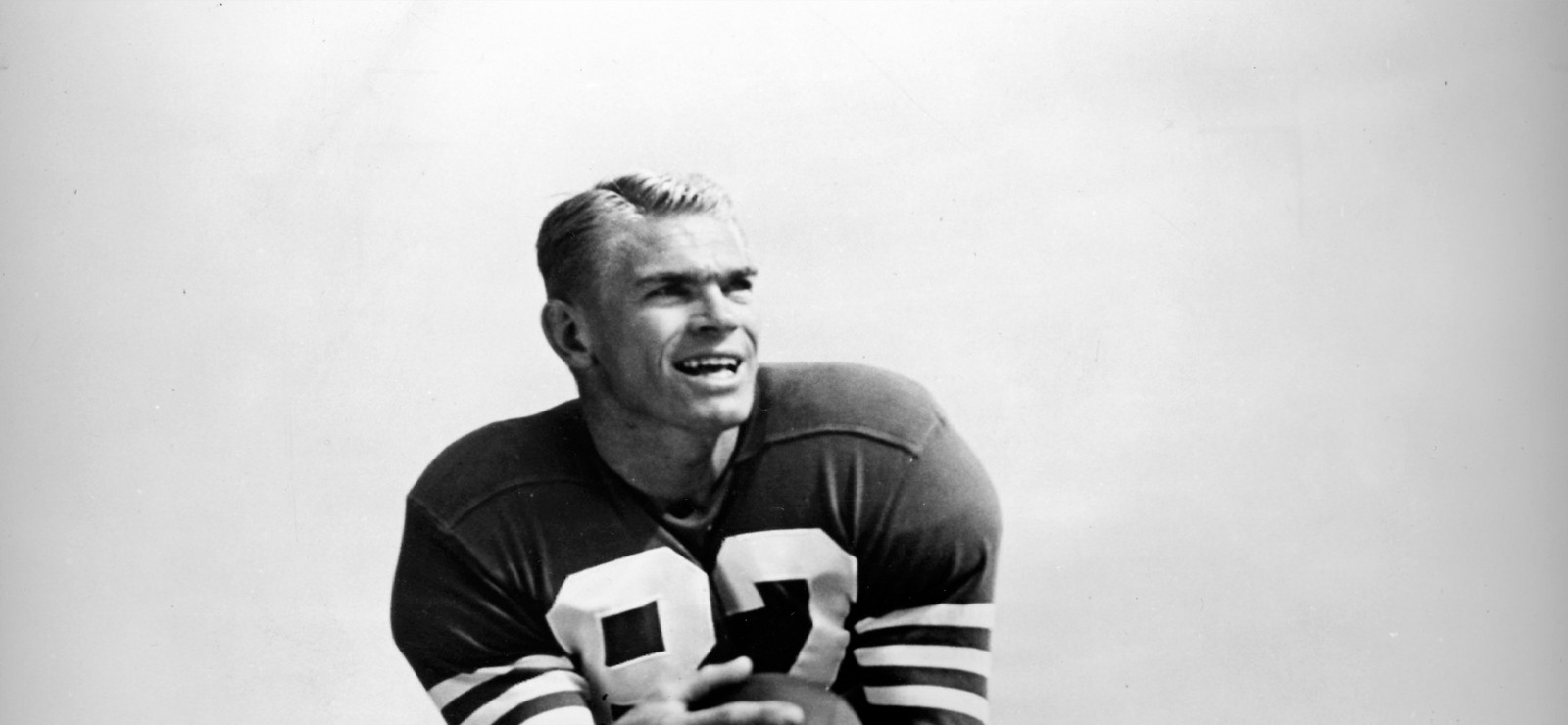Artifact of the Game: 49ers at Saints
The 49ers Salute their Military Heroes on Veterans Day
By Joe Hession, 49ers Museum historian
Joe Arenas was known for his reckless running style as a 49ers halfback and kick returner in the 1950s. The way he saw it, sprinting through a pack of snorting football players was a heck of a lot easier than his previous occupation as a U.S. Marine at Iwo Jima.
Despite being severely wounded at the famed World War II battle, Arenas found his way to San Francisco and played seven years with the 49ers from 1951-1957. During that stretch he was one of the NFL’s most dangerous return men, averaging over 27 yards on kickoff returns. Arenas is still ranked eighth on the NFL’s all-time return list. But kickoff duty was a walk in the park compared to the day he was hit by shrapnel and earned a Purple Heart.
“I was fixing my fox hole (on Iwo Jima) and all these shells were coming right over us,” Arenas said. “Then something hit me in the back. It felt like a big axe hit me. And it burned. I just couldn’t move. My buddy, who was in the fox hole with me, he said, ‘man I got to get you out of here.’”
The experience provided Arenas with a different perspective when he returned home and won a spot in the 49ers backfield. “I figured, I’ve been through a lot more than what happens out here on the football field,” Arenas said. “It gave me the attitude that ’You can’t hurt me.’”
Arenas is one of the numerous military veterans who swapped combat gear for a San Francisco 49ers uniform. Among them were wide receiver Alyn Beals, who served under General George Patton as an Army captain at Nuremberg, Germany. Quarterback Jesse Freitas saw action at the Battle of the Bulge. Receiver and kicker Gordy Soltau was one of the original U.S. Navy “frogmen,” a precursor to the U.S. Navy Seals. Hall of Fame defensive tackle Leo Nomellini fought in the South Pacific with the U.S. Marines. Over half of the 49ers original 1946 roster were returning WWII veterans. Many sharpened their skills prior to being discharged by playing for powerful military football teams.
One of the best military squads was located at tiny St. Mary’s College in Moraga, Ca., where the U.S. Navy established a flight training school in 1942. St. Mary’s Preflight, as it was known, featured the 49ers first big star, Frankie Albert, at quarterback and several other future 49ers players including John Woudenberg, Len Eshmont, Bob Titchenal, Emil Sitko, John Kuzman and Parker Hall. Among the St. Mary’s coaches in 1945 was a young Naval officer, and future U.S. president, named Gerald Ford. St. Mary’s Preflight competed against the west coast’s top colleges during the war years and registered wins over Oregon, UCLA and Cal.
When 49ers owner Tony Morabito began compiling his first 49ers roster in 1946 he mined the local military teams for talent and struck gold. Albert, Eshmont, Beals, Freitas, Hall and Woudenberg developed into the nucleus of one of pro football’s most dynamic new teams. The 49ers played that first season in the All America Football Conference and posted a 9-5 record, good enough to finish in second place behind the powerful Cleveland Browns.
For more information on these war heroes turned football stars take a stroll through the 49ers Museum presented by Sony. Included is a letter and citation from the Commandant of the U.S. Marine Corps to long-time 49ers offensive line coach Bobb McKittrick, an ex-Marine. There is also an Albert jersey as well as an interactive interview with Arenas and some Soltau-related artifacts. For information on Museum tickets, hours and content, visit levisstadium.com/Museum.

